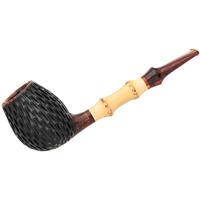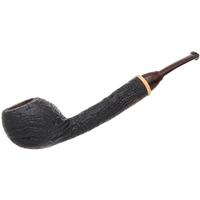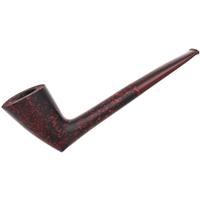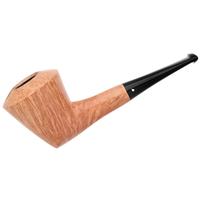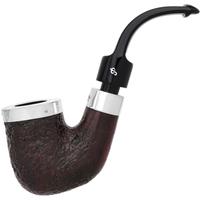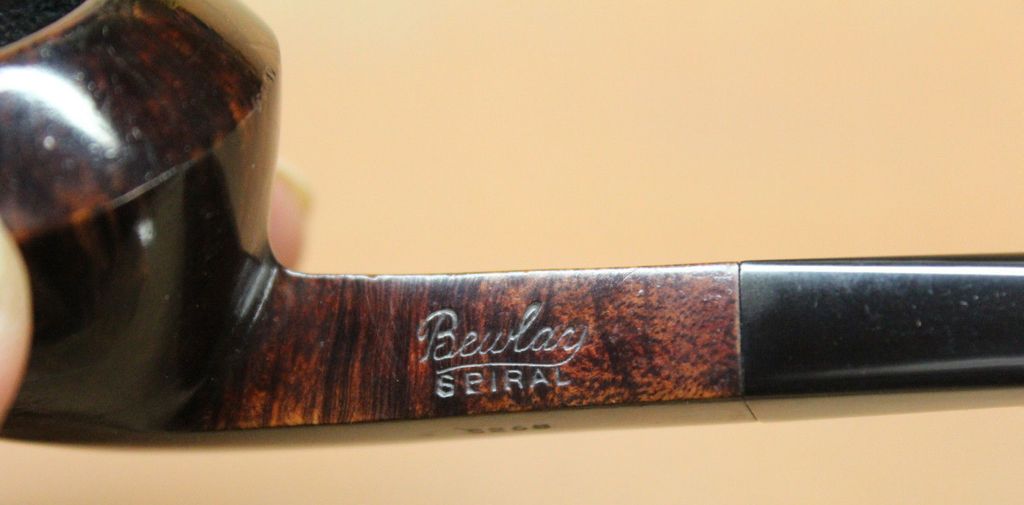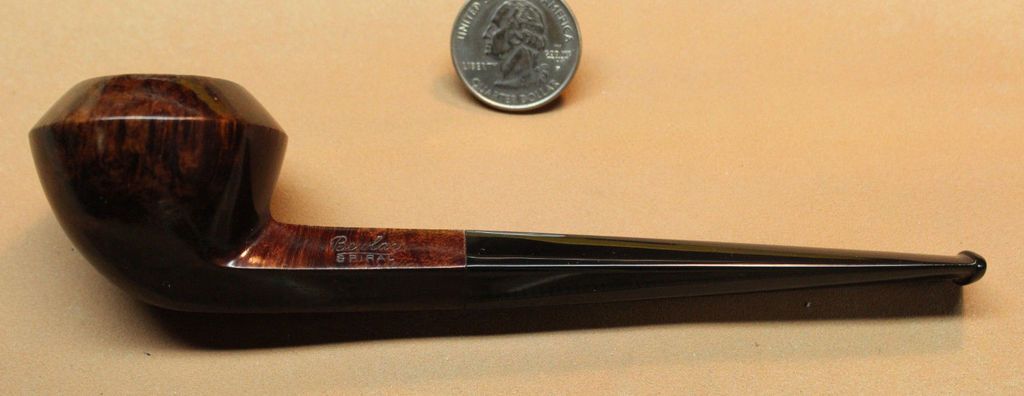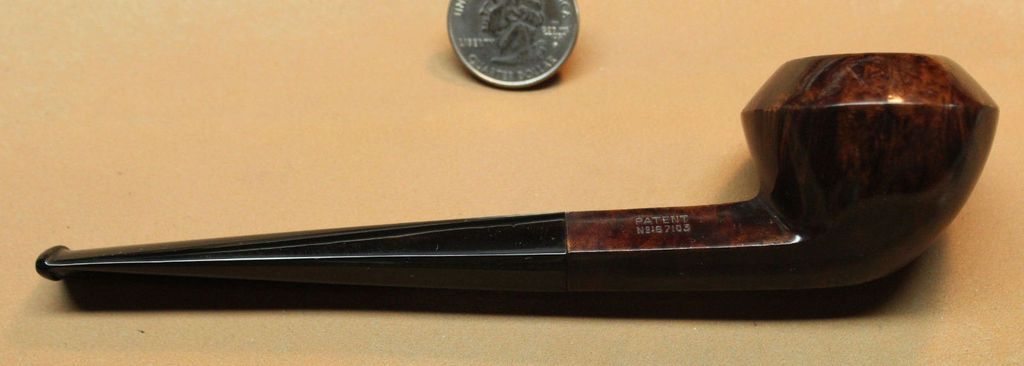Here's the rest of the intro photos. * marks notes (unfinished)
PHOTOS - S258 Prince, S160 Large Bent, S169 Small Bent


The stampings on this small prince and pair of bents are representative of the rest of the collection, with LONDON MADE now appearing on the right side of the shank, with the shape number underneath, and the patent numbers moving to the underside of the shank.
PHOTOS - S151



This unsmoked small pot has the full suite of nomenclature, including Sasieni's oval-shaped MADE IN ENGLAND logo, and is the only example I've added to the collection which has stampings identical to my initial find. The absence of this iconic stamp on subsequent acquisitions had caused considerable head-scratching at the time, although there was a simple explanation for the early Bewlay Spirals not having it. Most of them were made between 1921 and 1923, before this tooling came into use. The consensus in the literature dates its first appearance to 1924, which seems reasonable here, as l suspect production of the Spiral Patents had begun to wind down by then.*
The shape #151 on this pipe has provided rather convincing corroboration. As of this writing I have found matching numbers on four similarly-shaped Sasieni One Dot Rustics (two marked 151 XL, one 151X, and another simply 151) as well as one smooth - a Sasieni Specially Selected 151 OL - which looked virtually identical. Similarly, I have found a match apiece for the Spiral billiards #S39 and #S510.
BEWLAY & Co. - Early Family Era
Bewlay & Co. was the retail business of the Elkan family, who were cigar merchants in the Netherlands and Northern Germany prior to setting up shop in England. Several family-era documents date their arrival to 1778, and the launch of their first London store in 1780 at 49 W. Strand, offering top quality hand rolled cigars. In common with most cigar traders on the Continent, the Elkans were Ashkenazi Jews, and faced barriers to entry into the British tobacco market, both financial and otherwise. Given the timing of the move, the American Revolutionary War might have provided them with an opening, as the disruption of tobacco shipments from Virgina led to a serious shortage in England.
Cigars were still something of a novelty in the UK at the time. The firm prospered and remained under the control of successive generations of the Elkan family for more than 150 years, until 1937, when it was sold to the Imperial Tobacco Company.* Bewlay was operating thirteen high-end stores at the time, all of them in prime London locations.
Isaac Elkan(1825-1874) was the earliest to surface in my research, mentioned in connection with the opening of Bewlay's second retail shop at 143 Cheapside, London, in 1846. He appears to have played a leading role in moving the company into wholesale manufacturing, as the new premises included a sizable cigar factory.* Two of his sons, Alexander (1849-1924) and Baron (1860-1928), would eventually assume senior management positions in the firm as well. Both figure prominently here, as they were serving on the Board of Directors of Bewlay & Co. when the Spiral Patents were made.
Following Isaac Elkan's death in 1874, Bewlay & Co. briefly entered bankruptcy while family members with vested interests restructured the firm. The wholesale cigar importing and tobacco brokerage side of the business was split off as Elkan, Nathan & Elkan.* Samuel Elkan and Charles Elkan received mention in this regard, and again in 1875, when additional cigar factories were opened at 69 Aldersgate and 286 City Road.
These had been appropriately sited in London's crowded East End, abutting the district of Whitechapel, which was home to the majority of the city's Jews, and virtually all the recently arrived Jewish immigrants who made up their workforce. The venues simply had to be within easy walking distance, as many cigar makers would arrive with children in tow. When these new Bewlay factories began hiring workers, the Sasieni brothers surely heard news of it. They were living less than half a mile away.
PHOTOS - S258 Prince, S160 Large Bent, S169 Small Bent


The stampings on this small prince and pair of bents are representative of the rest of the collection, with LONDON MADE now appearing on the right side of the shank, with the shape number underneath, and the patent numbers moving to the underside of the shank.
PHOTOS - S151



This unsmoked small pot has the full suite of nomenclature, including Sasieni's oval-shaped MADE IN ENGLAND logo, and is the only example I've added to the collection which has stampings identical to my initial find. The absence of this iconic stamp on subsequent acquisitions had caused considerable head-scratching at the time, although there was a simple explanation for the early Bewlay Spirals not having it. Most of them were made between 1921 and 1923, before this tooling came into use. The consensus in the literature dates its first appearance to 1924, which seems reasonable here, as l suspect production of the Spiral Patents had begun to wind down by then.*
The shape #151 on this pipe has provided rather convincing corroboration. As of this writing I have found matching numbers on four similarly-shaped Sasieni One Dot Rustics (two marked 151 XL, one 151X, and another simply 151) as well as one smooth - a Sasieni Specially Selected 151 OL - which looked virtually identical. Similarly, I have found a match apiece for the Spiral billiards #S39 and #S510.
BEWLAY & Co. - Early Family Era
Bewlay & Co. was the retail business of the Elkan family, who were cigar merchants in the Netherlands and Northern Germany prior to setting up shop in England. Several family-era documents date their arrival to 1778, and the launch of their first London store in 1780 at 49 W. Strand, offering top quality hand rolled cigars. In common with most cigar traders on the Continent, the Elkans were Ashkenazi Jews, and faced barriers to entry into the British tobacco market, both financial and otherwise. Given the timing of the move, the American Revolutionary War might have provided them with an opening, as the disruption of tobacco shipments from Virgina led to a serious shortage in England.
Cigars were still something of a novelty in the UK at the time. The firm prospered and remained under the control of successive generations of the Elkan family for more than 150 years, until 1937, when it was sold to the Imperial Tobacco Company.* Bewlay was operating thirteen high-end stores at the time, all of them in prime London locations.
Isaac Elkan(1825-1874) was the earliest to surface in my research, mentioned in connection with the opening of Bewlay's second retail shop at 143 Cheapside, London, in 1846. He appears to have played a leading role in moving the company into wholesale manufacturing, as the new premises included a sizable cigar factory.* Two of his sons, Alexander (1849-1924) and Baron (1860-1928), would eventually assume senior management positions in the firm as well. Both figure prominently here, as they were serving on the Board of Directors of Bewlay & Co. when the Spiral Patents were made.
Following Isaac Elkan's death in 1874, Bewlay & Co. briefly entered bankruptcy while family members with vested interests restructured the firm. The wholesale cigar importing and tobacco brokerage side of the business was split off as Elkan, Nathan & Elkan.* Samuel Elkan and Charles Elkan received mention in this regard, and again in 1875, when additional cigar factories were opened at 69 Aldersgate and 286 City Road.
These had been appropriately sited in London's crowded East End, abutting the district of Whitechapel, which was home to the majority of the city's Jews, and virtually all the recently arrived Jewish immigrants who made up their workforce. The venues simply had to be within easy walking distance, as many cigar makers would arrive with children in tow. When these new Bewlay factories began hiring workers, the Sasieni brothers surely heard news of it. They were living less than half a mile away.



